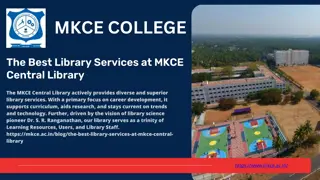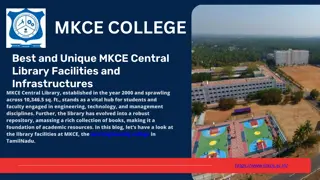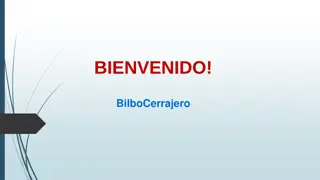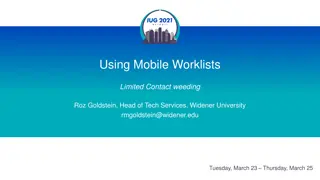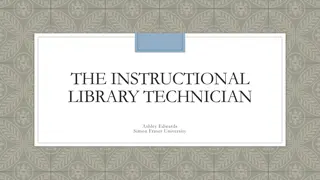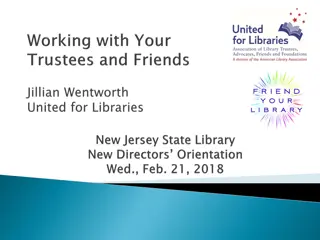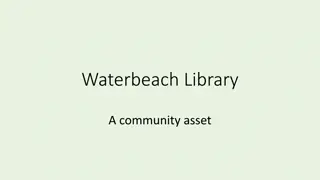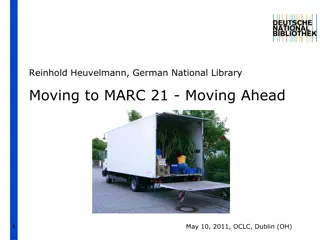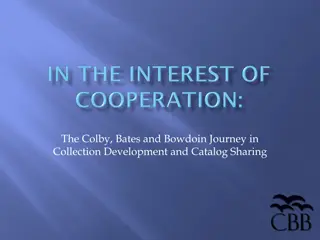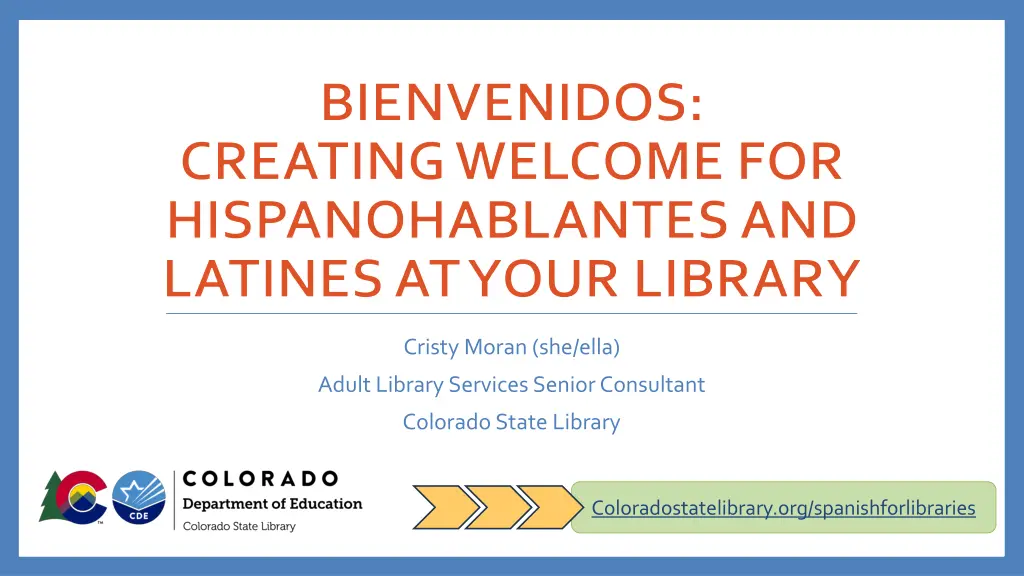
Creating a Welcoming Environment for Hispanic Communities at Your Library
Discover best practices and insights for creating a welcoming environment for Hispanic and Latinx communities at your library. Learn about the demographics, language preferences, and cultural nuances that can help you better serve and engage with Spanish-speaking visitors. Explore quick facts about the Hispanic population in Colorado, terminology, and pro-tips for enhancing communication and inclusivity.
Download Presentation

Please find below an Image/Link to download the presentation.
The content on the website is provided AS IS for your information and personal use only. It may not be sold, licensed, or shared on other websites without obtaining consent from the author. If you encounter any issues during the download, it is possible that the publisher has removed the file from their server.
You are allowed to download the files provided on this website for personal or commercial use, subject to the condition that they are used lawfully. All files are the property of their respective owners.
The content on the website is provided AS IS for your information and personal use only. It may not be sold, licensed, or shared on other websites without obtaining consent from the author.
E N D
Presentation Transcript
BIENVENIDOS: CREATING WELCOME FOR HISPANOHABLANTESAND LATINESAT YOUR LIBRARY Cristy Moran (she/ella) Adult Library Services Senior Consultant Colorado State Library Coloradostatelibrary.org/spanishforlibraries Coloradostatelibrary.org/spanishforlibraries
Outcomes Gain insight to the hispanohablante and Latine population you serve Discover barriers to feeling welcome at libraries from the perspective of [some] hispanohablantes Establish best practices for welcoming visitors (regardless of linguistic barriers)
CMO SE DICE?
First: Terminology Hispanic Latino/a Latinx / Latine / Latin@ Spanish Spanish-Speaking Hispanohablantes
Capture important words or ideas (think of them as tags ) as they come up in the presentation Next: Five Important Ideas *1 word or idea per 1 sticky note
Colorado By the Numbers Map of Colorado by county showing the % of Hispanic population 22.5% Hispanic self-identified population (Census Quick Facts, 2022) Languages Spoken at Home (American Community Survey 2022 5-year) 11% Coloradans speak Spanish at home 35% of Spanish at-home speakers self-assess English speaking less than very well Top cultures/ ethnicities/ countries of origin (American Community Survey 2022 5-year): Mexico (912K) Spain (121K) Puerto Rico (41K) El Salvador (20K) Cuba (13K)
PRO-TIPS FROM YOUR COLEGASY SOCIOS
DO: Start with a smile, end with a smile, laugh along the way Smile and acknowledge the customer. Provide a bilingual welcome that extends beyond cursory acknowledgment, as not all institutions are welcoming to Spanish-speakers and immigrants. Many immigrants have a lot of distrust for people in the United States because they have been treated unfairly in the past or simply because they don't speak English. So a smile goes a LONG way and word-of-mouth spreads quickly. Never feel pressured to say or do something to greet someone in Spanish... Do not freak out or run for help just smile, wave your hand, and leave it there.
DO: Try English first, Speak simply (not loudly) Don't freak out! Don't go running looking for a Spanish speaker in the building, it is not a medical emergency. Do your best effort to communicate, use Google translate, use your hands, use your face, speak slowly, point at things. We appreciate so much when people try. Try to be mindful of when they might need help from someone who is fully bilingual (if they are available), and when they might not. Non-English speakers are not a problem to be solved. They're active users of the library who deserve to be addressed as a human being and not just glossed over and ignored until you find someone that speaks the language they prefer to communicate in.
DO: Have [appropriate] multilingual signage I wish we had more bilingual signage. Our Spanish-speaking population is 20% and it would be really helpful for folks to be able to navigate the library when it's friendly to their language. if possible, make your building signs bilingual. Google translate is an alternative, but it is never correct so it's understandable if when you try it people won't know sometimes what you are meaning. There's always a cultural aspect to translation and you have to think about inclusion in more ways than just putting Spanish and English on the signs or flyers.
DONT:Run to your bilingual colleagues first. It s not an emergency. I wish they knew how challenging it is to be interrupted in a moment s notice and what that can do to your productivity on a daily basis. the extra burden they place on those who are able to speak Spanish. How mentally taxing switching between two languages... Please try everything you can before you call on your bilingual colleague huge weight on my shoulders when I get called over and over again to interpret--I wonder how would these folks be served if I wasn't there. It can feel very isolating to be the only person who can provide this service.
DONT:Correlate English language fluency with anything other than English language fluency Support non-English-speakers wherever they are linguistically and give them the freedom to be wherever they are in their language journey. I would like them to know how intimidating it can be to try to communicate in another language. Having patience during these interactions can make the patrons feel that this is a space for them. English language isn t easy to learn, and that many people work long hours for little pay so sometimes it s the last thing on their minds.
DONT:Use library jargon (ever, btw) In Latin America, libraries have a role closer to Academic libraries in the United States. So, most of the time, when we go to the library, it is related to studying rather than to programs. The efforts should be focused to let them know what kind of services/programs/events they can find in a library in the United States because we have a lot!!! Promotion and outreach into any marginalized community isn't about just a few events, but of creating relationships within that community and that takes a lot of time and effort and one might not see returns until about after two years.
Signs of Welcome Add Spanish language Add Spanish language to each desktop and laptop keyboard toggle instructions on a sticker, table tent, postcard, etc. Posters (and all directional or essential signage) in English and Spanish Got jigsaw puzzles? Why not dominoes? Not just coffee, but caf Don t DIY Find a partner: Promotores, immigration services, Spanish language radio station (hyperlocal, high yield)
Five Important Ideas
Five Important Ideas Start typing your five important ideas onto this slide. Doesn t matter where. We ll move them!
Coloradostatelibrary.org/spanishforlibraries Coloradostatelibrary.org/spanishforlibraries Contact Cristy Moran (she/ella) Adult Library Services Senior Consultant Colorado State Library Moran_c@cde.state.co.us https://calendly.com/cristymoran/ Subscribe to Colorado State Library s blog, Colorado Virtual Library, at coloradovirtuallibrary.org/email



